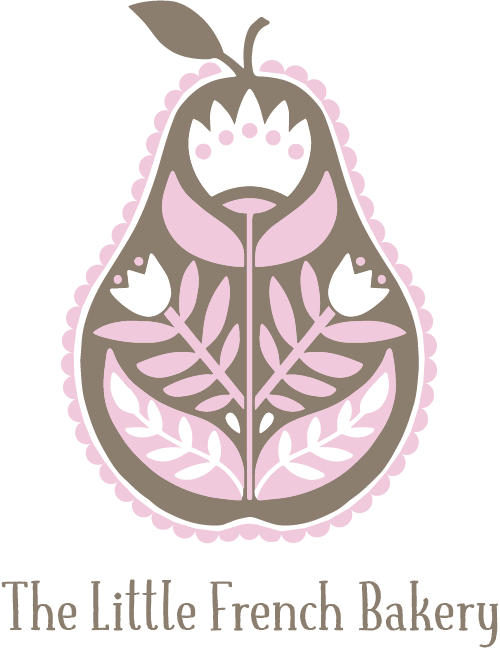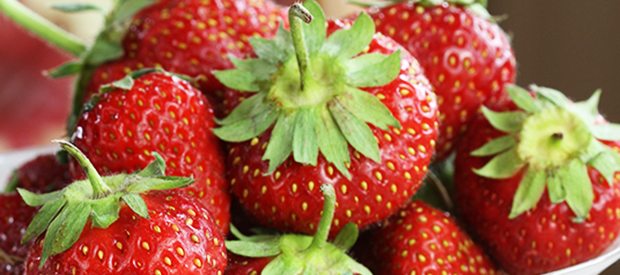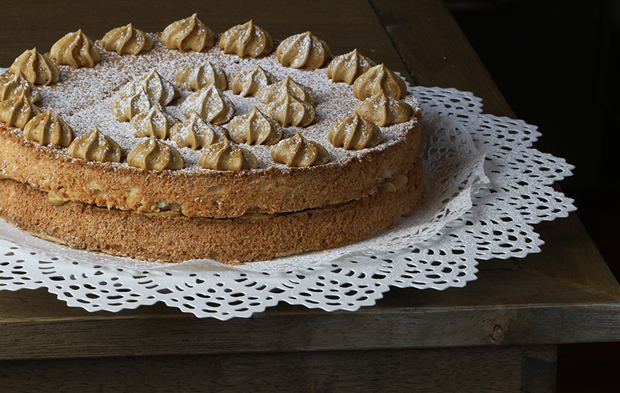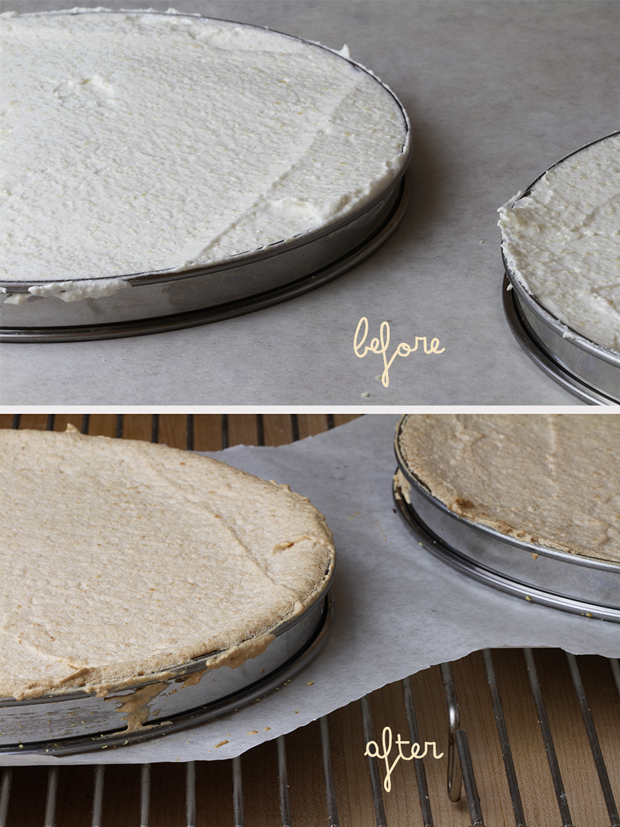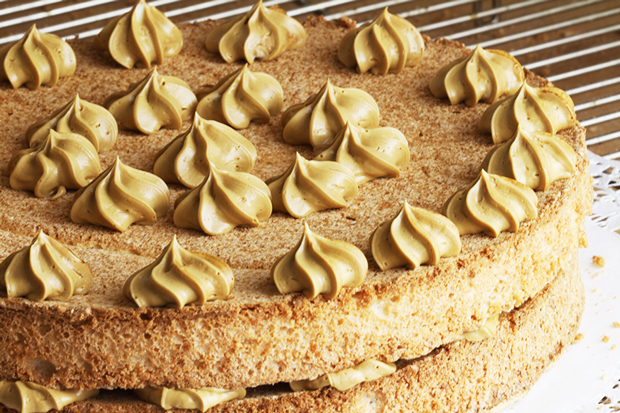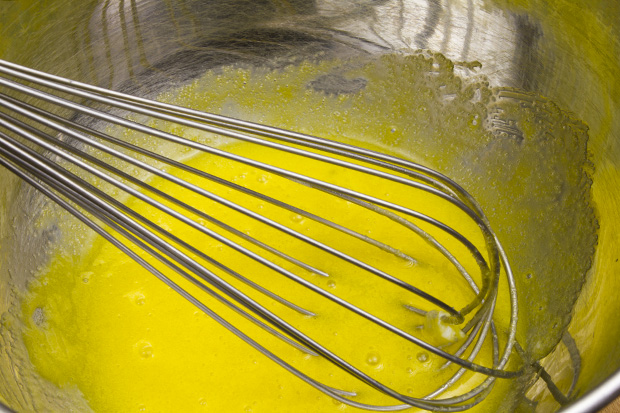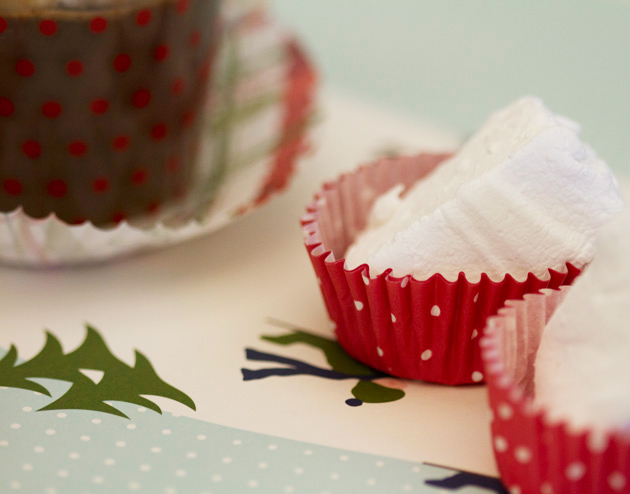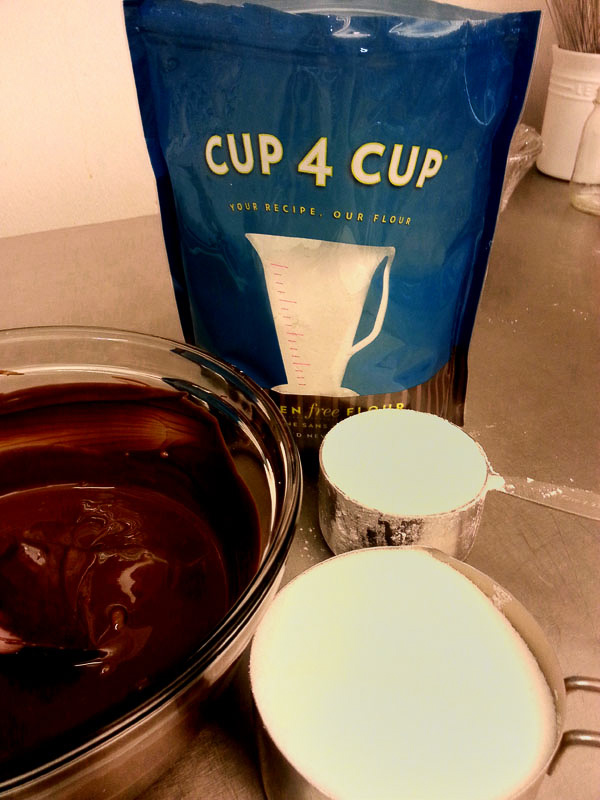It’s Strawberry time! Here’s a shortcake recipe sure to please.
Read moreKick Off to the Holiday Season
It’s the kick off to the holidays! Here’s a cookies recipe and my holiday giving ideas list.
Read moreFrench Macarons
Are you ready to tackle French Macarons? Here's my recipe and some tips & tricks.
Read moreTart aux Pommes (Apple Tart)
It's hard to contain myself. I promise not to talk too much about the book, but I've hit a milestone. The text, first pass, is finished. I've been pouring through my recipes, editing, thinking, writing, editing more, trying to find the words to describe the textures, techniques and tastes for the recipes. My first pass feels good, all 50,008 words of it. How do you estimate a word count? Well, I tried a very straight forward approach. Multiply the numbers of recipes and stories by the average number of words. I did that, and came up with 50,000. It worked! The word count isn't really a hard number. My editor gave me a range based on my proposal. My worry was if I'd be close. Too many? Not enough? The word count has been starring back at me for the past few months. When you're typing on a screen, there's nothing to show progress other than checks on lists, and the growing word count.
Testing and photography modes are in full swing. I love it. I'm making the prettiest versions of the recipes I can. I'll be including many photographs in the book. It's always helpful when I see photos of finished recipes I'm trying.
Now that school has started and autumn colors are creeping into landscape, it's time to think about autumn recipes. I'm thrilled to start working with apples and autumn vegetables. Today I made and photographed Tarte Tatin and Tart aux Pomme.
When the autumn mood strikes you, here's my Tart aux Pommes recipe. It's an excerpt from my text. Think of this as recipe testing with me!
Apple Tart
To print this recipe, click HERE
Makes one tart
1 recipe pâte brisée
6-7 golden delicious apples
4 TBSP unsalted butter, divided
1 lemon
1/2 cup sugar
nappage apricot glaze (or apricot preserves, heated and strained)
Preheat your oven to 350 degrees F.
Line a 10 inch tart ring with the pâte briséeand chill.
Peel, core and chop four of the apples and place in a skillet or large dutch oven. Add 2/3 cup water, 3 TBSP butter and sugar. Bring the apples to a simmer over medium heat. Cook, stirring occasionally until the apples will squish under the pressure of your spoon, but are still retaining their shape. You may need to add more water as the apples cook. Continue cooking. The liquid should be mostly evaporated. The sugar will cause the apples to caramelize a bit. Remove the pan from the heat to cool the apples. You may wish to transfer the apples to a plate or cool baking pan to speed the cooling process.
With the remaining apples, carefully peel, and core. Try not to make deep cuts into the apples. As you complete the apples, rub with lemon juice to reduce browning. Cut one apple in half top to bottom and lay cut side down. Slice 1/16-1/8 inch slices top to bottom, try to make the slices as uniform as possible. Repeat with the remaining apples. Squeeze a bit of lemon juice over the slices.
Transfer the cooled cooked apples into the center of the tart crust. Spread the apples to the edges, but keep a mound of apple compote in the center, about 3/4 inch deep.
Starting at the outer edge, place an apple slice with an end touching the crust, and round side slightly diagonal into the tart. Place the next slice so that it overlaps the seed side of the first slice and hides the end near the crust. Repeat until you’ve made a circle around the tart. You’ll tuck the last slice under the first. Make another ring of slices with about 1/3 of the second ring of slices overlapping the first. In the center, place some small slices, to make a tiny flower, or simply fill the space.
Melt the remaining butter. With a pastry brush, carefully blot and dab the slices. Be very gentle as the the brush can easily disturb the apples. If it’s too tricky, better to have less butter than messy apples.
Place the tart in the oven and bake 25-35 minutes or until the crust is deep golden brown. The edges of the apples will be deep golden as well.
Remove the tart from the oven, and cool. Heat the nappage and with a pastry brush, glaze the tart with the apricot glaze. Allow the tart to set for about ten minutes, then serve.
Dacquoise au Cafe (Almond Merengue with Coffee Butter Cream)
Every year about this time I get a little sentimental. Perhaps more than a little. Fifteen years ago I arrived in Paris ready to begin a journey that changed my life. There's something about the sights and smells of late summer that trigger the memories of walking to the Metro each morning, with excited and nervous butterflies in my stomach. What amazing technique and pastry were we going to learn? Would I be able to understand the Chef? And, could I get through the day blunder free?
The day we made this pastry in class, it was an evening kitchen session. Our main chef had gone for the day and we had another chef, from another school guest teaching the class. I sound like a broken record, but once again he was very handsome and had even better cologne than the pastry cream chef. To top is off, he wasn't wearing the usual navy blue houndstooth checked pants. His pants were navy blue pin striped. Kim and I secretly called him Fancy Pants. He was very nice, and very helpful. (Can you see the crush coming?).
Our class gathered our ingredients and proficiently made the dacquoise without fail. Then came the cream de beurre, or buttercream. Since we didn't use mixers, we needed to bring the sugar and water to the soft ball stage, and somehow pour it over the egg yolks waiting in the bowl at our work station, a distance of about seven feet.
The chef, Kim and I had been chatting (in our best caveman French),trying to be welcoming to our guest. While I was bringing my sugar to temp, he walked over to make sure the next step was successful. I remembered earlier in the day that our Chef had shown us a way to measure the sugar stage by dipping a flat sieve/skimmer into the sugar and blowing into it. If you can make bubbles, out the back, your sugar is at temp. Amazing. I asked our evening Chef about it, and he said "Oui!" So I gave it a try, and to my amazement, it worked. Now I had sugar at the soft ball stage ready to pour it on the yolks. The chef stood beside me... and I froze. "Je poulet, Chef", I said. I wish I could show you the look on his face. Just think about the look a dog gets when you talk to them and they tip their head to the side. Happy, but completely confused. "Poulet?", he said. My friends across the room roared with laughter. I was trying to tell him I was chicken. Guess what? That means nothing in French. One of my French speaking classmates came to my rescue and explained to the Chef that I was afraid to pour the sugar. He smiled and chuckled. I poured the sugar, and began whisking the mixture until it cooled and then added the butter. The buttercream was quite possibly the best thing I had ever tasted. Smooth and rich with the hint of coffee. And best of all, I had just made it.
While we were working the Chef demonstrated how to make marzipan roses using the back of a tablespoon. In addition, he made a few small animals, often seen in patisserie cases.
We assembled our desserts and presented them to the Chef for grading. As we were boxing our dessert and preparing for the Metro ride back to the hotel, the Chef walked up beside me, and with the biggest smile, set a little marzipan chicken of the workstation. "You are my favorite Chicken", he said. "Merci, Chef", I replied and I'm sure blushed six shades of red. I still teach students how to make roses, dacquoise and buttercream. And best of all, when Kim and I are together we often reminisce about Fancy Pants.
I've been wanting to share this recipe with you for a long time. It's an incredible dessert. It's pure classic French pastry. Simple ingredients combined together to make compenents. Combined together, you won't believe how elegant yet understated it tastes.
Dacquoise is a nut based merengue sponge cake, which make it naturally gluten-free if that's important for you. You can use all almonds, hazelnuts or a mixture. The key is to make great egg whites.
Start with almond flour, sugar, a dash of salt, a dash of cream of tartar and eggs whites.
For the very best merengue, start with eggs whites at room temperature or just a bit above. Start whipping them slowly, then gradually increase the speed. Once they reach soft peaks, add the sugar all at once and increase the mixer speed (or find a new set of arms if you're whisking by hand), and whisk until the peaks are firm and shiny.
Fold in the nut mixture, then spread in a ring, or a springform pan ring. If you don't have either one, just draw two 10 inch circles on a piece of parchment paper.
I highly suggest waiting until the dacquoise is cool before starting the buttecream. That way, there's no chance you'll be tempted to pipe the buttercream on warm cake.
Be sure your butter is at room temperature. Heat the sugar and water in a saucepan to 238 degrees F, or 118 degrees C. Pour the hot sugar over the whisked egg yolks and whisk until lightened and cool. Then start whisking in the butter bit by bit. This is much easier with an mixer, but it can definitely be done by hand with a whisk. You may need a helper to hold the bowl while you whisk in the hot sugar so your bowl doesn't scoot away.
To finish the dessert, use a thin knife with the blade pointed toward the edge of the pan, and carefully cut the cake away from the edge. Place on a plate, and pipe several rosettes of buttercream. Be sure to pipe a ring of rosettes near the edge. Set the next layer on top and garnish with more rosettes of buttercream. If you have some chocolate coffee beans, or nuts, add one to each rosette.
Serve immediately, or chill and serve.
I hope you'll give this recipe a try. If you've never had real French buttercream, you're in for a treat!
To print this recipe, click HERE
Dacquoise
Makes two 10 inch circles
8 egg whites plus 80 gm granulated sugar (6 1/2 TBSP) -to make merengue at the end of whipping
140 gm (1 2/3 cups) almond and/or hazelnut flour
60 gm all-purpose flour (2/3 cup) OMIT IF MAKING GLUTEN FREE, and substitute almond flour
1 dash salt
1 dash cream of tartar
100 gm (3/4 cup) powdered sugar
Preheat your oven to 350 degrees F. Line baking sheet with parchment paper. Bring the egg whites, cream of tartar, and salt to soft peaks. Add the sugar and increase speed until firm, and glossy peaks. Fold in the nut flour. Spread in the rings, or spread in the circle, about 1/2 - 3/4 inch thick. Bake for 30 minutes, until golden brown. The dacquoise will rise and then settle back into the ring. Cool completely. Peel off the parchment paper, and carefully remove from the rings.
For the Buttercream:
4 egg yolks, from large sized eggs
200 gm butter (14 tablespoons), at room temperature
230 gm water (just less than 1 cup)
170 grams confectioners' sugar (1 1/3 cups)
In a mixing bowl or the bowl of a standing mixer, have the egg yolks ready. Be sure the butter is at room temperature.Have In a small saucepan, place the water, then the sugar and heat to 238 degrees F. Use a candy thermometer to check the temperature.
When the sugar/water reach soft ball stage, slowly pour it over yolks, whisking continuously. Continue whisking by hand or with the whisk of the mixer, until the mixture is cool. If you feel the bottom of the bowl, you'll feel that the mixture is cool.
Add the butter one to two tablespoons at a time, incorporating well after each addition. If the mixture breaks, keep mixing. It will come back together. Add the coffee extract to taste. The buttercream should be a rich coffee color, with a nice coffee taste.
French Coffee Extract (Essence de Cafe)
200 gm granulated cane sugar (1 cup)
200 gm water (7 oz)
100 gm instant coffee (1/4 pound or 1 7/8 cup) Nescafe is best
Dissolve the instant coffee in the water and bring to a boil. In another saucepan,add the sugar and heat to cook until very dark caramel color (very dark amber). Stop the caramel by adding the hot coffee. The mixture will bubble, spit and sputter. Be very careful to protect your hands and fingers. Add the coffee slowly, and stir lightly to dissolve any hard caramel bits. Strain the mixture and cool. Pour into bottles, and store in refrigerator.
Door County Cherry Pie
If you hold up your right hand, palm facing you, it's the quick reference guide to locations in Wisconsin. Follow the bottom of your thumb to the middle of your palm and that's where I live. Chicago is down at your wrist. And the thumb? Well that's Door County. The peninsula juts out and separates Green Bay and Lake Michigan. Green Bay (go Pack!) is at the bottom of your thumb followed by Sturgeon Bay, Egg Harbor, Fish Creek, Sister Bay with Gills Rock at the tip. My parents and grandparents grew up in the Green Bay area and spent lot of time in Door County. As kids we spent at least one week there each summer camping in Peninsula State Park. A gem of the Wisconsin State Park system. Every family has their favorite spots. We spent days on the lake side swimming in cold Lake Michigan at a tiny county park.
Door County is famous for several things. Just to name a few... 1. Beautiful beaches and sunsets 2. Scandinavian Restaurants and Culture 3. Fish Boils 4. Cherry Orchards 5. And last but not least, Cherry Pie
It's safe to say that 99.9% of Door County restaurants have a cherry dessert on their menu. Most have a cherry pie served warm with ice cream.
Orchards sell freshly picked cherries and many have pick-your-own. Shortly after we were married, Gary and I visited Door County. I couldn't wait to show him Sand Bay Town Park, the goats on top of Al Johnson's Swedish restaurant, take the ferry to Washington Island, and pick cherries. It's easy I told him. We just get buckets, reach up in the trees and fill our buckets with the tart, bright red fruit. Our trip was great and the cherries were abundant. We quickly picked a few buckets and brought them home for family and a few pies.
The last few years have been tough on the cherry crop. Early thaws followed by sudden snow and storms have made the harvests small to non-existent. This year is a great year. The long spring brought many blossoms. The trees are full of cherries! Last week our friend made a trip to the peninsula and brought home a bucket of cherries.
For those of you close enough to get in on cherry season, here's a pie recipe. For those too far away, pick up a bag of frozen cherries and join the fun. Even if you've never make a pie. Let's do this!
First, you'll most likely need to pit the cherries. If you have a cherry pitter, you're in business. If not, a hairpin or paperclip will work. Slide the rounded end into the top of the cherry and pull of the pits. Pit the cherries over the cherry bowl so you save some of the cherry juice.
I know what you're thinking. The pie sounds great, but a crust? I'm including an all butter crust recipe for your called Pate Brisee. If you're not quite ready for that, it's a-ok to purchase a refrigerated crust. The crust will happen one day.
If you're making the Pâte Brisée, you'll cut the butter together add the wet ingredients into the well and chop the dough together. Here's the dough lined up, just before it gets smeared on the counter to combine.
Then using a technique called Frisee, the crust is smeared between the heal of your hand the work surface to layer the flour and butter. The butter will melt in the oven and push the layers of flour apart, creating a flaky, tender crust.
I added a few blueberries to the cherries to make the crust a bit fuller. Here's the fruit just before it went into the pie crust.
To print this recipe, click HERE
Pâte Brisée (Sweet Pastry Dough)
Makes one 10 inch tart crust (double recipe for 2 pie crusts)
Ingredients:
200 g flour
100 g butter, cold
20 g sugar
1 egg
4 g salt
1 TBSP water, cold
vanilla - a dash if desired
Using a knife or bench scraper, cut the butter into 1/2 inch pieces. On your work surface, make a pile with the butter and flour. Cut the flour and butter together until you have pea sized pieces. Work quickly so the butter does not get soft or warm. Gather the butter/flour mixture and make a circle with a well in the center. It will look like a flat wide volcano, with a three to four inch open space in the center. The chefs called this a fountain. Into the center add the water, egg, sugar and salt. With your fingers, swish these ingredients together until you feel that the salt and sugar are dissolved. Using the pastry/bench scraper, cut the liquid into the flour and butter. This is when you’ll find out if your countertop is level! The mixture will be shaggy and streaks and bits of butter.
Line the dough up in a long row (left to right) in front of you. The line will be about two inches thick, an inch high, and about twelve inches wide. Using the heel of your hand, smear the dough straight ahead across your work surface taking about 1/3 of the line of dough each pass. Work left to right ... or right to left. Once all the dough has been smeared, gather it back into the line and smear again. You’ll make about two to three passes. There will still be a few streaks of butter in the dough. Flatten the dough into a disk about 6 inches in diameter and 1/2 inch thick. Wrap the dough in plastic wrap or parchment paper, if you plan to use the same day. Chill the dough in the refrigerator for twenty to thirty minutes.
Here's a tip: The French term for smearing the dough is fraiser (freh-zey). Rather than mixing the dough, it creates layers of butter and flour. When the butter heats, it melts and becomes steam which pushes the layers of flour apart creating a nice flaking crust. Keeping the ingredients cold and chopping rather than mixing will keep the dough light and flaky. Over working the dough will develop the gluten making the dough tough and elastic. Resting the dough will make it much easier to roll.
Door Country Cherry Pie
Ingredients:
4 cups pitted tart cherries
1 1/2 cups sugar
4 Tbsp cornstarch
1/2 tsp almond extract
1/2 tsp salt
1 Tbsp heavy cream
1 Tbsp granulated sugar to sprinkling on the crust
1 batch double crust pie dough - your choice
Preheat your oven to 400 degrees F.
After the cherries are pitted, drain off most of the juice, and add the cornstarch, sugar, salt and extract. Allow to rest for about 10 minutes.
Roll the bottom pie crust and place in the bottom of the pie plate. I would recommend a 9" pie plate, not too deep.
Place the cherries and most of the juice in the crust.
Roll the top crust and drape over cherries. Trim the top crust about 1/2 inch past the edge of the pan. Turn it under the bottom crust and with your index finger and thumb of one hand, press and pinch the crust around the other index finger. Make five or six inch slits on the top of the crust.
Brush the crust with heavy cream and sprinkle with sugar.
Place the pie on a parchment paper or silicone mat lined baking sheet. Bake at 400 degrees for 20 minutes. Reduce the heat to 350 degrees F, and bake until juices bubble out the top slits, about 30 minute more. If the crust starts to become too brown, tent the pie with foil or just make strips of foil to protect the edges from becoming too dark. Cool completely. It's best to serve a pie the day after it's made so the juices can thicken. You'll have a much prettier piece of pie.
Let me know your favorite Door County memories!
If you're heading to Door County, here are some of my favorite spots.
The Whistling Swan - A beautiful Inn and Restaurant.
The White Gull Inn - Another great place to sleep and eat.
For libations, try JJ's La Puerto (Door, get in?!), Bayside Tavern, of the C&C Supper Bowl
The best smoked fish in Door County is at Charlie's Smokehouse, Gills Rock
The only place I've ever picked cherries is at The Cherry Hut
For a fun day trip, head to Washington Island. Just a ferry ride away.
For more on Door County...
Be safe and be kind. Happy Travels!
Toasted Coconut Marshmallow Bars
It's the countdown to the holiday weekend. Summer is in full swing and it's time to find fun, quick and easy treats.
I was in the grocery store today walking down the baking supply aisle as I always do, and an ingredient caught my eye. Toasted coconut marshmallows. Stop the cart! For those of you who can't stand the thought, taste, smell or texture of coconut, you may want to pass on this one. For those who are still reading, all I can say is... these are delicious!
One bag? Two bags? More? No, I'm wasn't sure what I was going to do with them, and if they were weird I didn't want too many bags hanging around. Now, what to do with them. Marshmallows.... s'mores? Maybe, but too obvious.
Rice Krispie bars? Curious. The idea hit. How about Special K instead of Rice Krispies? Not a huge change, but interesting. It fit the requirements. Fun, easy and as goofy as the marshmallows.
The recipe is the same as making Rice Krispie Treats. Melt the butter, add the Marshmallows. Add the cereal, mix and press into a buttered or oiled pan. I was a bit worried about the coconut scorching or burning. No problem. Just keep the heat at low/medium and you'll have no problem.
I spread the mixture into an eight inch cake pan, then drizzled with melted chocolate chips. The perfect combination in my book. Chocolate and Coconut.
To print this recipe, click HERE
Toasted Coconut Marshmallow Bars
1 bag Toasted Coconut Marshmallows (about 30)
3 cups Rice Krispies or Special K Cereal
2 1/2 Tbsp Butter or Margarine
1/3 cup chocolate chips, melted
Directions
In a large saucepan, melt the butter/margarine. It's ok if it browns just a little.
Add marshmallows, stir to melt.
Add the cereal. Stir to mix, crushing the cereal a bit as you stir.
Spread in a buttered baking pan or small, flat dish with sides.
Drizzle with melted chocolate chips if desired. Cool, cut, and serve!
I hope you have a Happy July 4th! Wave a flag, thank a fireman, be safe and be kind.
Pastry Creme (Crème Pâtissière)
As I prepare to leave for Paris it seems like the perfect time to tell this story. It's always fun remembering my days at Le Cordon Bleu. I hope you'll enjoy.
The March to the Poubelle
Our Basic Pastry Course was in the intensive format meaning that we took 3-4 classes each day instead of 1. It condensed 12-14 weeks of curriculum to just three. It truly was intense. We would be in the lecture room then immediately run downstairs to the kitchen to prepare at least one or all of the recipes the chef had just demonstrated, then back to the classroom. The days started at 8:00 am, and went until 8:00 pm. Some days included a free time block to run an errand, or in our case to do a little shopping and or eating. Both activities were highly encouraged. After all, how were we to learn what great pastries looked and tasted like?
The chefs in the school worked a French workweek (35 hours), so we had to have a combination of chefs to cover our long days. Our main chef instructor was off for the evening and bid us farewell. Another chef, who happened to be a Cuisine program chef, was going to oversee our kitchen preparations. All the chefs were very distinguished and impeccably neat. Our new babysitter chef was even more so. He exuded an air of confidence and importance that had us more nervous than usual. Add to this the fact that cuisine chefs have little time for pastry chefs, (too much weighing and measuring) let alone pastry students in their first course.
It was early in the course, and we had seen pastry cream prepared, and made it ...once. The chef suggested that we divide the main recipe and each make a component as if we were working together in a restaurant. One or two people would make a sponge cake, another the mousse, and another the crème pâtissière. This sounded very reasonable. We divided the duties between our small group, increasing the amounts so each of us would have the perfect amount for our dessert.
We carefully completed our mise en place (gathered our ingredients) and went to work. Our Chef walked about the room watching us, and helping with any questions and offering help with locations of ingredients. We had the feeling there were about a million other places he'd rather be, and he had more or less drawn the short straw to teach late that night. Every time he passed by my work station, I got a whiff of his amazing cologne and a stern glance that made me even more nervous. My French was caveman at best, so as he'd pass by, I'd muster a "bonjour Chef" and offer a nice Wisconsin smile. He smiled back, but looked like he had just tasted something sour.
My contribution to our group was the pastry cream. We needed 4 times the recipe for 4 students so I had to separate 16 eggs. It went fine. No broken yolks, and no spills. I gathered the milk, sugar, flour, cornstarch and eggs had headed over to the stove. I combined the ingredients in the order and technique from what my notes and memory offered. So I thought. I stood at the cooktop stirring and stirring, smiling away at the Chef as he approached. He stood beside me, and watched me stir. I had nothing to contribute to a conversation so I kept stirring and nervously smiling. Finally, he broke the silence with "Qu'est que sais?" I 'm sure I looked at him with a blank, panicked stare. "Qu'est-ce que tu fais?" (what are you making?), he asked. I thought to myself, what is wrong with him? Surely he's seen someone make pastry cream before. "Crème pâtissière, Chef", I said. Hoping that he'd move on. But no.
Then came the moment. The belly flop in front of your swimming class moment. In one motion, he flicked his head to the up and to the side, made THE tisk sound, and picked up my saucepan. "Suivez-moi", he said. I looked behind me where my classmates stood paralyzed watching and hoping one could translate. "He wants you to follow him", one piped up. So off we went from one end of the kitchen to the other. It felt like the distance of a football field, but it was really about 50 feet. I was about three steps behind, wondering where could we be going? We arrived at our destination, a gleaming stand holding a perfectly attached garbage bag. Why couldn't we just use the garbage can at our end of the room? He stepped on the foot pedal with his gorgeous French, perhaps Italian shoes and up went the lid. He stretched out his arms, and lifted the pan over his head and slowly dumped the gooey, wall paper paste mess from the pan into the garbage. My pastry cream was poubelle. Garbage.
"Répéter", he said as he put the pan in a nearby sink. I made the walk of shame back to my workstation. My friends were pale, very sympathetic and trying not to make eye contact. They had busied themselves with things to do that required crouching behind the workstation on the other side. I willed myself not cry. After all, he didn't yell and scream. But now what? I had no idea what I had done to cause the problem.
"Je vais vous aider à faire de la crème pâtissière", he said. I will help you make pastry cream. I gathered a new set on ingredients. He stood beside the entire time. Part of me wanted to crawl in a hole, and the part felt like I had a pro at my side who wasn't going to let me screw this up again.
We went to the stove together. I don't know what I did wrong the first time and never will. The second time required very little time at the stove. "Aller vite", go fast he said motioning with his arms so I knew just how fast to go. Our pastry cream was perfect. He held the plastic wrap lined pan as I plopped the rich, dreamy vanilla custard in to the pan. "Vous avez fait un bon travail ce moment", You did a good job that time. No hugs and back slaps, but a slight warmth in his eyes to let me know it was okay.
To this day, I think of him every time I make pastry cream. It's not good, it's great, and I have him to thank. Merci beaucoup, Chef.
I can't stand beside you, but I'll walk you through the steps of making crème pâtissière. Perfect pastry cream.
The ingredients are simple. Milk, sugar, flour, cornstarch and vanilla. I don't add other flavorings or steep fancy ingredients into the milk. I like to keep it pure and simple. If you don't have a vanilla bean, you can add vanilla extract at the end.
Hold the vanilla bean with one hand, and with the other slice the bean open. Using the back side of the paring knife, gently slide down the length of the bean gathering the tiny vanilla seeds/paste. Put all the seeds and the pod into a saucepan with the milk and 1/2 of the sugar. Stir briefly, then bring to milk to a simmer over medium heat.
Now, in a bowl, whisk the egg yolks. Now while whisking the yolks, add the sugar. Keep whisking. There's a chemical reaction of heat that occurs when yolks meet sugar. This cooks the yolks, and can make microscopic scrambled eggs in the cream making the texture less than perfect. Once you have the eggs and sugar mixed, add the flour and cornstarch and mix well. The mixture will be thick.
Now comes the fancy part. Once the milk is at a gentle boil/simmer. Pour about 1/3-1/2 of the milk in the bowl with the eggs. This is called tempering and lets the eggs know that they're about to get cooked. It keeps them from scrambling later and making lumpy cream. Mix the milk and eggs with a whisk until the mixture is smooth.
Now, bring the milk in the pan back to a rolling gentle simmer. Have your pan ready near by, lined with plastic wrap. Start whisking the milk and pour the eggs mixture into the milk whisking quickly. Pay careful attention to the corners of the pan. Stir quickly until you see the cream "burp" a bubble from the middle. This lets you know that the cream is heated through and can go into the pan. Don't overmix. The cream should be thick and glossy. This whole process will take seconds, not minutes.
Now pour/spread the cream into the pan, and tuck the extra wrap around and over the cream to prevent and skin from forming on the cream as it cools. Look at this tiny little flecks of vanilla in the pastry cream!
Be sure the cream is less than 2 inches thick and is cooling in a layer rather than in a bowl. It's much safer from a food safely standpoint. Allow the cream to chill about 2 hours or until cool in the center.
When the cream is cool. Transfer to a bowl and whisk to loosen and smooth the cream. Add about 1 T of Grand Marnier or a favorite liqueur adding a beautiful aroma and hint of flavor. You don't need to add the liqueur if you don't want to. This is point where you would add vanilla extract if you didn't use a vanilla bean.
Use the pastry cream to fill eclairs, layer between sheets of puff pastry, or use it to fill a pretty cake.
I hope you'll give this a try. It's delicious and a classic building block of all French pastry.
To print this recipe, click HERE
Pastry Creme (Crème Pâtissière)
500 ml milk
4 yolks from large eggs
125 gm sugar
30 gm cornstarch
30 gm flour
1 vanilla bean
1 T Grand Marnier or to taste (optional)
Directions
1. Line a shallow baking pan with plastic wrap.
2. Using a paring knife, slice the vanilla bean lengthwise through one side as if slicing a tube. Using the back side of the knife, slide it down the length of the exposed bean to scrape out the seeds. Remove seeds from vanilla bean.
3. In a saucepan, add the milk, vanilla seeds, the bean pod and 1/2 of the sugar.
4. Heat to a simmer.
5. While the milk is heating, whisk the egg yolks with the remaining sugar in a large heat proof bowl. Then add the cornstarch and flour. Mixing completely.
6. Remove the vanilla bean pod from the milk. Pour 1/2 or less of the warm milk into the bowl over the egg mixture and whisk until smooth. Increase the heat under the milk to a very slow boil.
6. Pour the egg mixture back into the pan, whisking quickly and constantly until the mixture forms a smooth, glossy cream and the cream "burps" a bubble in the pan.
7. Pour cream into the lined pan, folding the wrap and pressing on to the hot cream. Be careful, it's hot!
8. Chill until completely cool.
9. Remove plastic wrap and put the cream in a bowl. Whisk until smooth, then add Grand Marnier or other liqueur. This is the time to add vanilla extract if you did not use a vanilla bean.
10. Your pastry cream is ready for your favorite pastry! It will keep for about 2 days and must be refrigerated.
Jumbo Marshmallows
Some things in life just make you happy. Big fluffy marshmallows are perfect treats. My little friend Maeve turned four recently, and I wanted to send something extra special to her birthday party. Big puffy marshmallows were perfect. They are so much better than store bought, and can be cut into just the right size. I like the big cubes, but you can cut them smaller if you like. You might want add color, flavor or just keep them plain old white. These are delcious, and paired with a cup of cocoa or turned into a s'more, they can't be beat. I promise, they're not too hard, and are well worth the effort.
To print this recipe, click HERE
Jumbo Marshmallows
1 cup cold water
3, 1/4 ounce packets unflavored gelatin
2 cups granulated sugar
2/3 cup corn syrup
1/4 tsp. salt
1 cup powdered sugar
Using shortening or cooking spray, grease an 8 inch pan. Sprinkle with powdered sugar to cover in a generous coating.
Fit a stand mixer with the whisk. Empty the packets of gelatin into the bowl, and cover with 1/2 cup water.
In a medium/large saucepan, combine the sugar, 1/2 cup water, and corn syrup and salt. Attach a candy thermometer to the side of the pan and heat the mixture until the thermonmeter reads 240 degrees F. Don't stir the mixture..
Very carefully, pour the hot sugar mixture over the gelatin with the mixer running at low speed. Be careful not to pour on the whisk or the sugar will splatter. Slowly increase the mixer speed and whip until the marshmallow is cool and the bowl feels cool to the touch. This will take about 12 minutes, or longer. A double batch will fill a mixing bowl and take about 25-30 minutes to cool. Note: your mixer may get warm or overheat...
Pour and scape the marshmallow into the pan and smooth. You may want to use a wet spatula if the mixture is hard to spread. Dust with powdered sugar and allow to set overnight uncovered. After the marshmallow has set, turn out on to a cutting board and cut into cubes. A straight down cut works easier than sawing motion. Dust the marshmallow with powdered sugar to prevent sticking. Store well wrapped at room temperature for up to 2 weeks.
Rich Chocolate Cake (plus... a treat for gluten-free bakers!)
There's a chill in the air, and it's time to start baking! Something warm, comforting and delicious. Here's just the dessert. You'll love this one! I made this cake for Gary about 25 years ago. (and ever since...) It was a surprise for a his birthday. We weren't really even dating yet, but I think this may have sparked the flame. Our friends just celebrated their 45th anniversary and I made this for them. It's very romantic, and perfect for a party. The best news... I substituted Cup 4 Cup gluten free flour, for the wheat flour. It worked perfectly. No one could tell the difference including me. Here's the recipe that will make you a star as the holidays roll in. Everyone I know loves this cake. It's dense, very chocolatey, and even appeals to those who claim not to really like chocolate. You can serve it at room temperature or cold. Invite friends because one cake goes a very long way since it's so dense. The ingredients are pretty simple. Melted chocolate, butter, a dozen eggs, sugar and some flour. I bet I had you at melted chocolate. I used Cocoa Barry 58% French chocolate. Use any bittersweet/semisweet you like. Just not milk, it will be too sweet.
My Lost Crates box this month from Joy the Baker, included vanilla beans, vanilla extract and a big bag of Cup 4 Cup gluten free flour by Thomas Keller. When Chef Keller does something, it's always great. The flour looks and feels like wheat flour. No funny taste, smell or texture. I would highly recommend going finding some right away and giving it a try. If you have a moment, follow the link to Lost Crates. It's always a surprise and very fun!
To print this recipe, click HERE
Dark Chocolate Cake
14 ounces semisweet chocolate (the darker, the better
12 eggs, separated
2 cups granulated sugar
3 1/2 sticks butter, softened
1 cup unbleached flour, sifted (or 1 cup Cup 4 Cup flour)
Confectioner's Sugar for serving
Preheat your oven to 325 degrees F. Butter and sugar an 10 inch spring form pan. Tap out any excess sugar.
Break or chop the chocolate into small pieces and melt in microwave or in a pan placed over another pan of barely simmering water. Stir until smooth, and cool slightly. Be careful not to burn the chocolate.
Beat the egg yolks and sugar until they are pale and light yellow. When you lift the whisk or beater over the mixture, there should be a ribbon of the mixture that falls from the beaters and gently lays on top of the egg/sugar mixture. Add the chocolate and mix thoroughly. Stir in the butter, and flour.
In another bowl, beat the egg whites until they are stiff. Spoon a spoonful of the chocolate mixture into the egg whites and mix. Then add the egg whites to the chocolate mixture, folding very gently until mixed. Be very careful not to overmix, or deflate the batter.
Pour the batter into the prepared pan (it will come close to the top) and set on the rack (middle rack) and bake for 1 hour and 20 minutes. A cake tester or toothpick should come out clean when inserted into the center of the cake. The cake will rise and crack, but will settle as it cools. Cool on a rack for 15-20 minutes, then release the ring of the springform pan. Allow the cake to cool, then refrigerate until cold. It's best to wait until the cake is cold to remove the bottom of the springform.
To serve sift with powdered (confectioner's) sugar, and some whipped cream, if desired. Makes 20 servings (small... but rich)
Adapted from The Silver Palate Cookbook.
Here's the cake on it's pedestal at the anniversary get-together. I wish you could smell it... it's SO good.
I'd love to hear how your cake turns out! Cheers.
Orange Almond Tart- French Friday #2
This week's French Friday recipe is the Orange Almond tart. It's been a busy week surrounded by chocolate, chocolate, chocolate. This recipe was a nice change of pace, and still very sweet and romantic.
I've made many almond cream tarts. This almond cream is very soft and rich. It's also called Frangipane. Dorie's tart uses an interesting crust very similar to shortbread. It was very straight-forward, and delicious! Two methods were suggested for putting the crust into the tart pan. I used the press-in method. The dough is very soft and this seemed much easier.
One on my favorite things to do in the pastry world is cutting perfect little orange segments from the orange. This recipe used 3 oranges. After trimming all the peel from the orange, I slid the knife just inside the membrane on each side and lifted out the the perfect orange pieces. I don't know why that's so fun, but it is!
The smell and taste are amazing. The dessert was the finishing course to a great dinner with freinds. Of course, a Valentine's weekend dinner needed chocolate of some sort, so we made sipping chocolate and had a box of chocolate caramel bon bons from earlier in the week.
For anyone looking for something delicate, delicious, and not too difficult, this is it!
From my kitchen to yours, Happy Valentine's Day!
